Table of Contents
Myths surrounding glute exercises are just as widespread as the number of people who desire a perfect butt. If you’ve been putting in the work but are still not seeing any results, it can be both frustrating and demotivating. It may be that you are making some mistakes based on popular myths about strengthening the glutes. In this article, we will debunk these myths and show you how to achieve a strong, firm, and shapely butt, while leaving these misconceptions behind.
10 Biggest Myths Surrounding Butt Strengthening and Training
There are numerous myths that surround butt exercises, leading people to make training mistakes that undermine their overall results. From misconceptions about who can benefit from butt strengthening to debates over the most effective exercises and rep ranges, it can be difficult to separate fact from fiction. In this article, we’ll uncover the truth about butt training and dispel common myths.
1. Only women should do glute exercises
When it comes to glute exercises, you might immediately imagine a woman doing lunges, squats, or the popular hip thrusts. However, the notion that only women should engage in glute exercises is just as mistaken as the claim that bicep exercises are exclusively a man’s thing. The gluteal muscles are important not just from an aesthetic, but also from a functional point of view. They rank among the largest muscles in the body and are involved in the most basic movements, such as walking, sitting and standing up, or picking up a dropped pen from the ground. They are also crucial for athletes, as developed glutes can help them become stronger, run faster, jump higher, as well as improve acceleration, dynamics, and overall agility in motion. Therefore, strengthening glutes is beneficial for everyone. [1]
Are you also interested in learning which glute exercises should definitely have a spot in your training plan? You will find them all in our article: 9 Best Glutes & Legs Exercises.
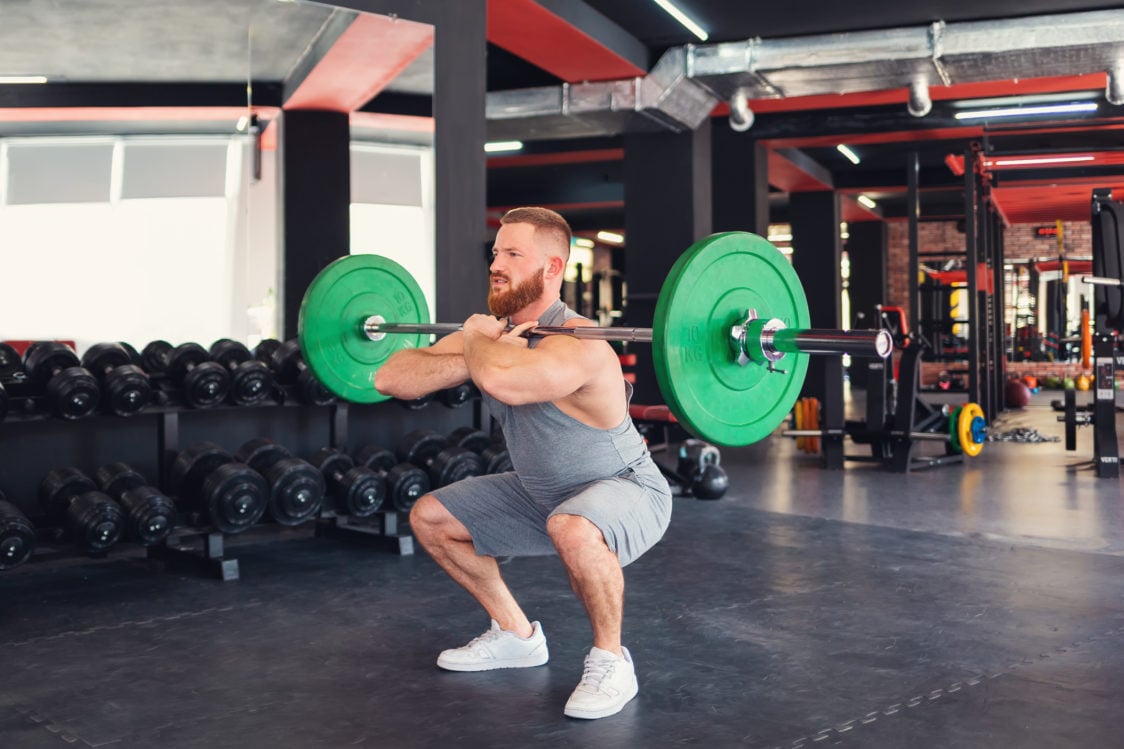
2. Strengthening the glutes will help burn fat in this area and make your butt slimmer
Exercises that target the butt can help strengthen the glutes and make them firm, while also promoting muscle growth in this area. However, it is important to note that they are not a substitute for liposuction and cannot effectively remove fat from the buttocks on their own. The idea of targeted weight loss in specific areas, such as the buttocks, is a common myth that also applies to the belly and inner thighs.
Achieving fat loss in any part of the body requires a comprehensive approach that involves modifying both your diet and exercise routine. By creating a calorie deficit, where your energy expenditure exceeds your intake, you can gradually reduce your overall body fat percentage, leading to weight loss. It is important to note, however, that the order in which fat is lost in specific areas, such as the belly or buttocks, is mainly determined by genetics and hormonal factors. While performing 100 bodyweight squats daily to slim down your buttocks may seem like a viable option, it is not necessarily the most effective solution. [2]
If your goal is to lose weight, and you want to learn how to approach it step by step, read our article: Simple Weight Loss Basics: You’ll Be Surprised What’s Really Important.
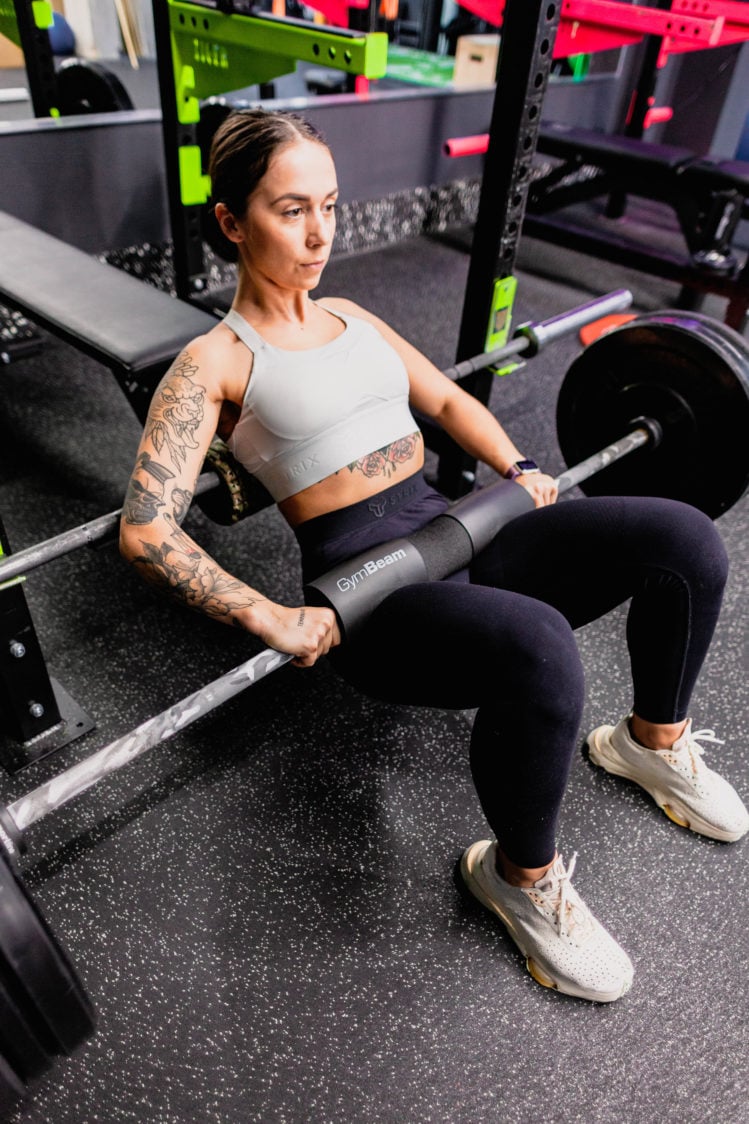
3. The most effective way to strengthen your glutes is by performing bodyweight exercises
While bodyweight exercises such as squats, lunges, and glute bridges are suitable for warm-ups, beginners, or as part of a HIIT workout, they may not be enough to build the round and sexy butt you desire. As we mentioned before, the gluteal muscles are among the largest in the body and not easy to tire out. They require a significant training stimulus to become stronger.
Bodyweight exercises can be effective for beginners, but even they will eventually need to include strength training with weights to achieve the desired progress. This is because simply increasing the number of repetitions for bodyweight squats or lunges is not sustainable in the long term and may become tedious.
A more effective approach is to gradually increase the resistance using dumbbells, kettlebells, or a loaded barbell with weight plates. This way, your muscles will continue to receive new stimuli to initiate the adaptation mechanisms responsible for muscle and strength growth. By doing so, you will prevent stagnation and your progress will become evident. [3]
However, you don’t have to completely abandon bodyweight exercises. They also have their place in the training plan.
To achieve your desired results, it’s essential to set a proper training load and adjust it over time. The following article provides guidance on how to accomplish this effectively: How Much Weight to Lift for Muscle Growth, Strength, or Weight Loss?
4. Squats are the best glute exercise
Which exercise is the most effective for building your glutes? We’d bet a protein powder that most of you would answer – squats. Although they can help you develop strong lower limbs, there are more effective exercises for building the glutes. Squats do not engage the glutes as intensely as you might expect.
Squats X Hip Thrusts:
- Scientists measured the activity of the gluteal muscles during squats and found that high activity levels were only recorded during the upward movement, specifically in the first half of the movement. However, the gluteal muscles then return to a relative state of rest. You would probably agree that you don’t really feel your glutes working during squats yourself. [4]
- When it comes to building the glutes, hip thrusts yield much better results. This exercise showed intense activation of the gluteal muscles throughout almost all phases of the movement. Additionally, hip thrusts are not as technically demanding as the squat, and you will likely be able to lift much more weight. As a result, this exercise creates a greater mechanical and metabolic stress on the glutes, leading to training adaptations such as increased strength and muscle growth. [4]
However, that doesn’t mean you should completely eliminate squats from your training plan. They are still one of the top exercises for the lower body and should be included in some variation in every athlete’s workout routine. Moreover, for a comprehensive glute workout, it’s more effective to include multiple exercises that target this muscle group.
If you want to learn more about why squats are good and how to execute them properly, then read our article: Squats: Benefits, Proper Execution and the Most Effective Variations for Both Home and the Gym
You might be interested in these products:
5. One exercise is enough to train the glutes
The glutes consist of three parts: the large, middle, and small gluteal muscles (musculus gluteus maximus, medius and minimus), each of which is involved in movement with varying levels of intensity. Therefore, one exercise is unlikely to be sufficient for comprehensive strengthening of all three gluteal muscles. Instead, incorporating a greater variety of exercises in your training plan will ensure that you effectively work all of your gluteal muscles.
- Exercises that place greater emphasis on the large gluteal muscle include: hip thrusts, deep front and back squats, cable kickbacks, front and back lunges, and Romanian deadlifts.
- Exercises that target the middle gluteal muscle include: using a machine or cable for adduction and abduction movements, side lunges, lateral band walks, side leg raises, and single-leg squats.
- Exercises that target the small gluteal muscle include: machine or cable adduction and abduction, side leg raises, single-leg glute bridges, curtsy lunges, and Bulgarian split squats. [5–6]
Start off by doing 2-3 basic exercises such as hip thrusts, Romanian deadlifts, and back squats. Then you can include additional exercises with resistance bands such as lateral walks, clamshells, glute bridges, and leg raises. These exercises can help you activate and strengthen the deep-seated muscles. However, they are better suited for the end of your workout as a “burnout” exercise.
You can draw inspiration for exercises with a resistance band from the following article: Get a Firm and Round Butt Without a Barbell. Try Resistance Band Workout.
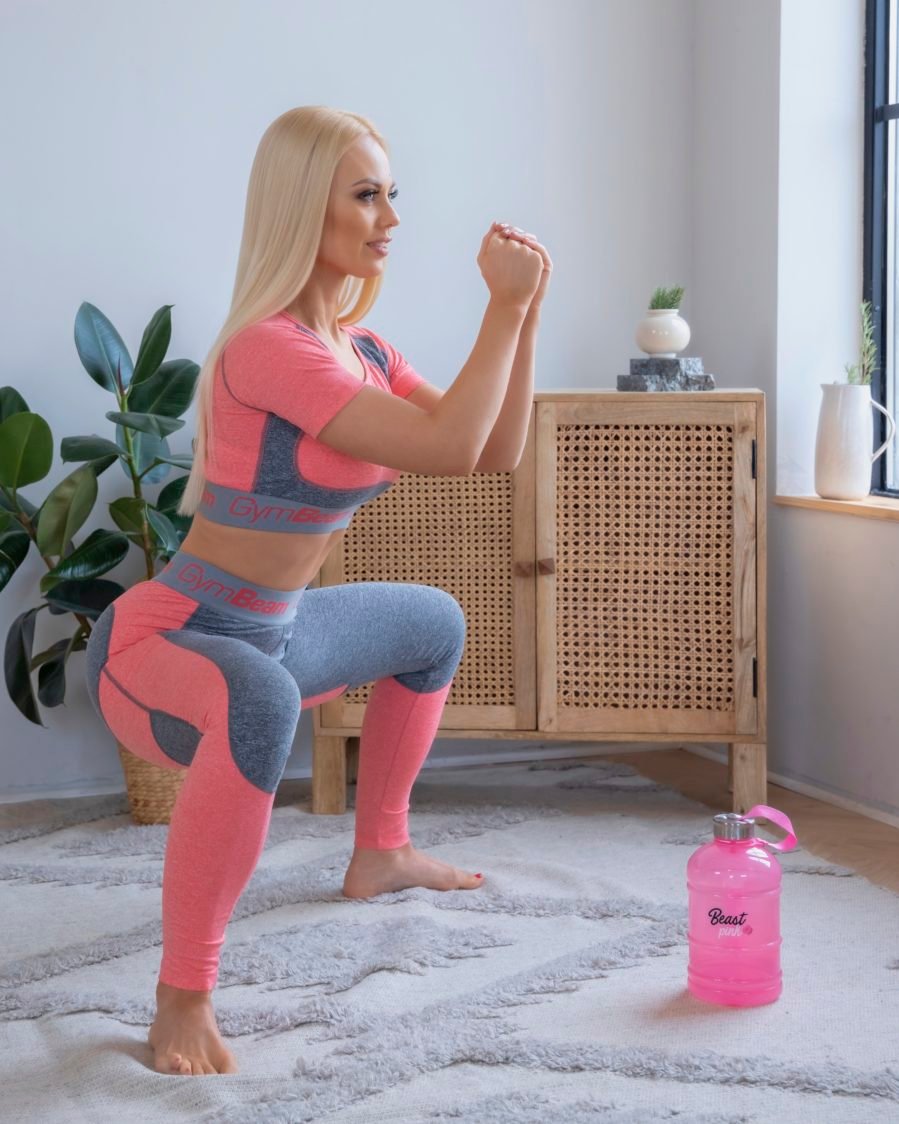
6. The only way to make progress is through heavy weight training
When designing your glute training plan, it’s important to keep in mind that the gluteal muscles are comprised of both fast-twitch (white, type 1) and slow-twitch (red, type 2) muscle fibres.
- Fast-twitch muscle fibres respond best to exercises with heavy weights and low repetitions, or explosive exercises like sprints, jump squats, or box jumps.
- Slow-twitch muscle fibres, on the other hand, are better targeted with exercises using smaller weights and higher repetitions.
So, what’s the best way to create a well-rounded glute training plan? It’s not nearly as complicated as it may seem. If you’re working on your glutes twice a week, split your workouts into one focused on strengthening exercises with weights and the other on bodyweight exercises. This approach targets both types of muscle fibres and can result in more comprehensive glute development.
Incorporate glute training into your workout routine 2–3 times a week, taking into account other muscle groups and any other physical activities you may have planned. Keep in mind that muscles typically require 24–72 hours of rest and recovery after strength training to fully heal and regenerate. [7–8]
7. There’s no need to change up your set glute workout routine
Perhaps you already have your favourite exercises, weights, and rep ranges that have worked well for you in the past figured out. However, if you have recently hit a plateau and your progress seems to be stalling, consider plugging the gaps in your routine to get the most out of your training. How to go about it in order to get the most out of your training?
Say hello to the principle of progressive overload. It may seem like a scientific term, but it simply means that in order to continue making progress, you need to gradually increase the demands you place on your body during training. Your muscles will adapt to the level of stress placed upon them within a few weeks, and they will develop the necessary strength and endurance to handle it more easily. However, once your muscles have adapted to a particular level of stress, they will no longer be challenged, and further progress may stall.
Of course, this doesn’t mean that you have to completely overhaul your workout from every week. Making minor adjustments like increasing weight load (by a maximum of 10%) or reps each week is sufficient. However, make sure to master the proper technique before doing so. It’s also fine to maintain the same workout for a few weeks if you’re not feeling up to a more demanding routine. After a few weeks, consider swapping out exercises and experimenting with slight changes in body positioning to discover which angle targets your glutes the most intensely. [9]
If you want to learn more about how to create a functional training plan, then read our article: How to Create a Quality Gym Training Plan?
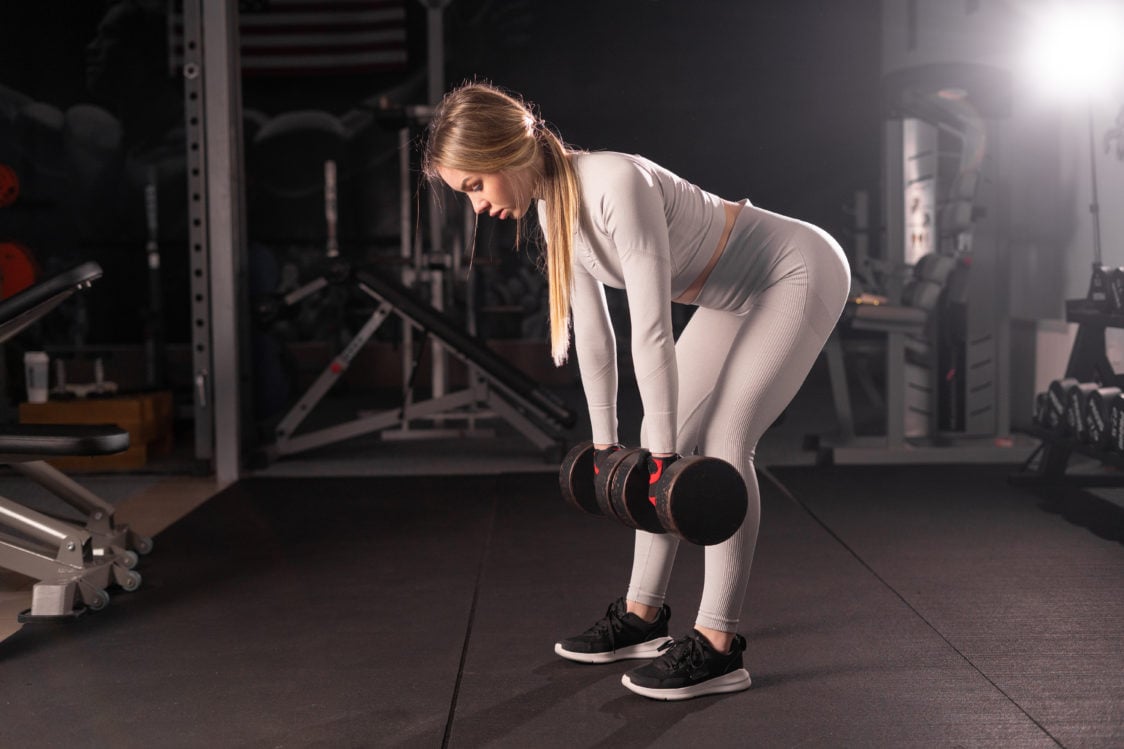
8. By training the glutes, you can completely change their shape
Do you believe that by exercising like Jennifer Lopez, you will achieve the same round and admirable booty? Unfortunately, that is not entirely true. The shape of your glutes is primarily determined by the inherent shape of your pelvis, the distribution of fat in your body, and your muscle growth tendency. As it is, some people are born with a predisposition to have a rounder butt, while others may have a flatter one. However, this does not mean that it is not worthwhile to put in the effort and rely solely on genetics. Your lifestyle, including exercise and diet, still has a significant impact on the shape of your body. [10]
By diligently performing hip thrusts, deadlifts, or squats, you can eventually transform your butt into the best version of itself. However, it’s essential to remember that muscles require proper nutrition to grow. If you aim to have not only a firmer but also rounder butt, you will need to adjust your diet accordingly. In addition to consuming adequate amounts of protein (1.4-2 g per kg of body weight), it’s crucial to increase your energy intake as well. You can easily calculate this using our energy intake and macronutrient calculator.
You can find everything you need to know about achieving a firm and round butt in the following article: How to Tone and Shape Your Butt and Legs
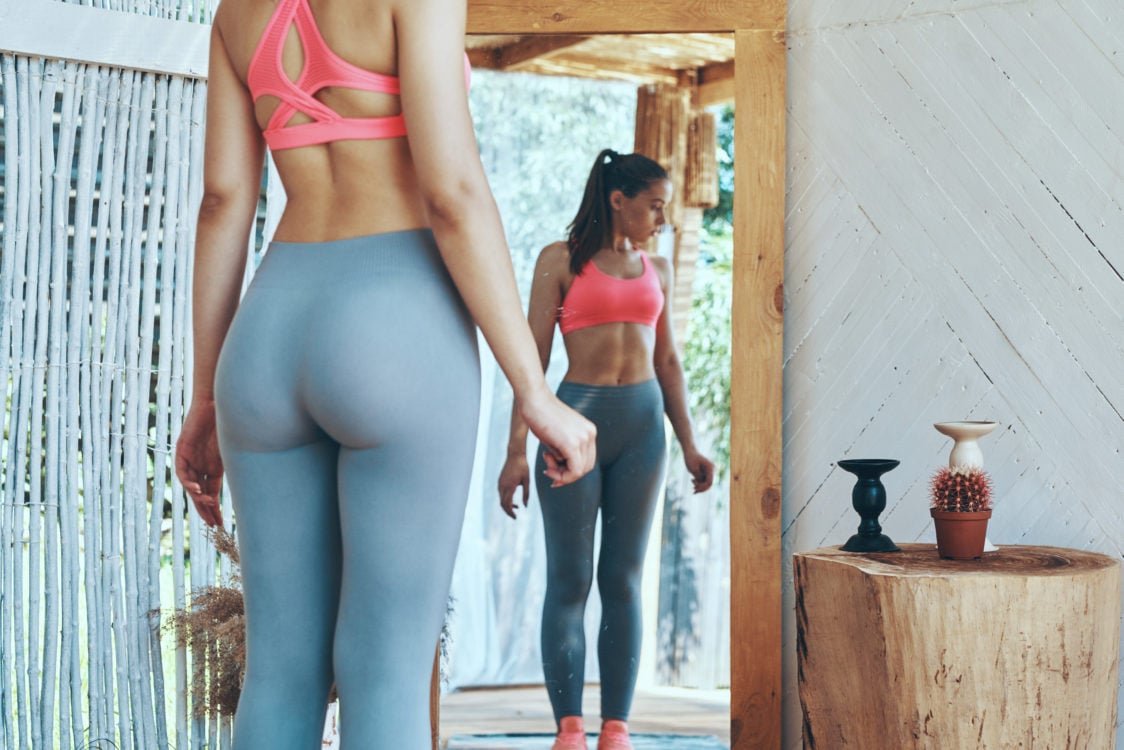
9. Before training, it is important to devote a significant amount of time to activation exercises
At the gym, one can often see women who focus on activating their glutes before engaging in strength training. While this is not necessarily a bad thing, some of them do at least five resistance band exercises that can take up to 30 minutes of precious time and energy. As a result, they may not have the same level of energy and focus during the heavier part of their workout.
Before diving into heavy squats or deadlifts, it’s enough to warm up your muscles and loosen up your hips and knees. You can add one or two exercises with a resistance band if you like, but it’s not necessary. Afterwards, move on to the main part of the workout, starting with a lighter weight load or just an empty bar. After this phase, your body should be more than prepared for heavier weight loads. [11]
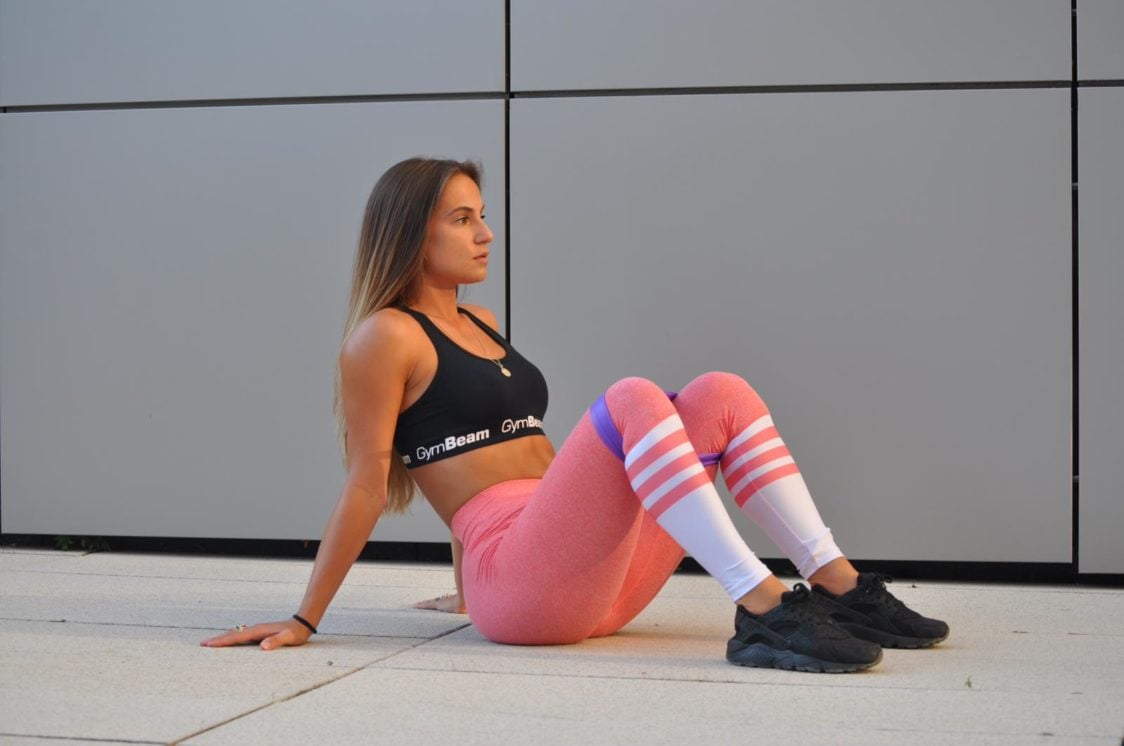
10. If your butt doesn’t hurt the next day, even just while sitting, the workout was pointless
Many people believe that muscle soreness the day after exercising is proof of a hard workout. If they aren’t reminded of yesterday’s lunges every time they stand up from a chair, they usually think they didn’t exercise hard enough. Fortunately, this is yet another myth. Muscle soreness after exercise, also known as DOMS (Delayed Onset Muscle Soreness), typically occurs 12–24 hours after exercise and is a common reaction of the body to stress. The main cause are micro-tears in the muscle fibres that occur during strength training. You typically feel it most intensely after a new workout, an increase in weight load, or after making other changes to your exercise routine.
According to studies, muscle soreness is not a reliable indicator of the effectiveness of a workout because genetics also plays a significant role in this. For example, if you take two people at the same level of performance after an identical training, one may experience excruciating muscle soreness while the other may not feel it much at all. [12–13]
Furthermore, several scientists have concluded that muscle damage, which is the cause of DOMS, is not a prerequisite for muscle growth. Other factors such as mechanical tension or metabolic stress also play a role in this process. This implies that a workout that does not cause significant muscle soreness can still be deemed effective. [14]
If you’re curious about what you can do to ease muscle soreness after a workout, read our article: How to Support Regeneration Using a Massage Gun and Other Tools?
What are the main takeaways?
Up until now, you may have believed in some deeply ingrained myths about strengthening your glutes. Whether it was due to the wrong choice of exercises, overly long warm-ups, using only bodyweight exercises, or the belief that post-workout soreness is a reliable indicator of the effectiveness of your workout. However, after reading today’s article, you will know exactly what changes you need to make in order to achieve well-developed glutes. Plan your training routine effectively and remember to include targeted butt exercises such as hip thrusts or Romanian deadlifts. Moreover, give your body enough time to rest, and also keep a watchful eye on your diet. If you stick with these changes for long enough, you will definitely see the results you are looking for.
If you know someone who still holds onto the prevailing myths about glute strengthening, be sure to share this article with them. It will help them to open their eyes and change their approach to exercise.
[1] Human Kinetics. Glutes in Motion. – https://us.humankinetics.com/blogs/excerpt/glutes-in-motion
[2] Polish, A. The Fat Loss Myth You Want to Be True: Spot Fat Reduction. – https://barbend.com/spot-fat-reduction-myth/
[3] Damas, F., Libardi, C. A., & Ugrinowitsch, C. The development of skeletal muscle hypertrophy through resistance training: The role of muscle damage and muscle protein synthesis. – https://doi.org/10.1007/s00421-017-3792-9
[4] Schoenfeld, B. J. The Mechanisms of Muscle Hypertrophy and Their Application to Resistance Training. – https://doi.org/10.1519/JSC.0b013e3181e840f3
[5] Eric Cressey. Squats vs. Hip Thrusts: Which is Better? – https://ericcressey.com/squats-vs-hip-thrusts-which-is-better
[6] Fawkes, J. The Ultimate Guide to Glute Training for a Better Butt. – https://betterhumans.pub/the-ultimate-guide-to-glute-training-for-a-better-butt-b7c4016ca87f
[7] Hevy. Top 15 Gluteus Minimus Activation Exercises—Hevy. - #1 Workout Tracker & Planner Gym Log App. – https://www.hevyapp.com/gluteus-minimus-exercises/
[8] Redefining Strength. How Much Do You Really Know About Your Butt?! – https://redefiningstrength.com/how-much-do-you-really-know-about-your-butt/
[9] Ide, B. N., Leme, T. C. F., Lopes, C. R., Moreira, A., Dechechi, C. J., Sarraipa, M. F., Da Mota, G. R., Brenzikofer, R., & Macedo, D. V. Time course of strength and power recovery after resistance training with different movement velocities. – https://doi.org/10.1519/JSC.0b013e3181e7393f
[10] Adams, A. Progressive Overload Explained: Grow Muscle & Strength Today. – https://blog.nasm.org/progressive-overload-explained
[11] ISSA. Are Perfect Glutes in Your DNA or Your Workout Routine? – https://www.issaonline.com/blog/post/are-perfect-glutes-in-your-dna-or-your-workout-routine
[12] Lift Big Eat Big. Is Glute Activation Necessary? – https://liftbigeatbig.com/is-glute-activation-necessary/
[13] Physiopedia. Delayed onset muscle soreness (DOMS). Získáno – https://www.physio-pedia.com/Delayed_onset_muscle_soreness_(DOMS)
[14] Schoenfeld, B. J., & Contreras, B. Is Postexercise Muscle Soreness a Valid Indicator of Muscular Adaptations? – https://doi.org/10.1519/SSC.0b013e3182a61820


Add a comment